syndicated
Latest

The best fast chargers for every device
By Nick Guy This post was done in partnership with Wirecutter. When readers choose to buy Wirecutter's independently chosen editorial picks, Wirecutter and Engadget may earn affiliate commission. Read the full guide to fast chargers for every device. The outdated USB chargers clogging store shelves and online listings—and still included in the box with new iPhones—won't charge your latest gear as fast as possible. New fast chargers are safe, affordable, and up to three times faster than the old ones many people have had lying around for years. We've tested the best fast chargers—no matter what phone, tablet, or computer you use—and collected our recommendations on this page.

The best plug-in smart outlet
By Rachel Cericola This post was done in partnership with Wirecutter. When readers choose to buy Wirecutter's independently chosen editorial picks, Wirecutter and Engadget may earn affiliate commission. Read the full guide to plug-in smart outlets. A smart plug can make magic, turning any electronic device into one that can be controlled remotely or put on a schedule. That means you'll never have to enter a dark room or worry that you left the curling iron plugged in. We recommend the Wemo Mini, a reliable Wi-Fi smart plug that works with most major smart-home platforms, including Amazon Alexa, Apple HomeKit, and Google Assistant. The Wemo Mini is the only model that has been rock-solid reliable over long-term use, offers a compact design that won't block both outlets on a wall plate, and supports all the major voice-control platforms. Like most of the smart plug-in switches we tested, the Wemo Mini is easy to set up: Plug it into an outlet, download an app to your phone, make the wireless connection, and then control lamps, small appliances, and even higher-draw devices like fans and air conditioners. The Wemo family also includes light switches and dimmers, so it's easy to expand your system. The Lutron Caséta Smart Lighting Lamp Dimmer costs more than most smart plugs, but it has two outlets, allowing you to control two lamps or strings of lights at once (though not independently). And it lets you dim those lamps rather than just turning them on and off—a rarity among smart plugs. The Caséta system connects over a robust wireless mesh network, rather than Wi-Fi, so Wi-Fi dead spots in your house aren't a problem, but it requires Lutron's proprietary Caséta Smart Bridge hub. We recommend you buy a kit that includes the hub. This outlet supports only lamps, not fans or other motors, but the Caséta line includes compatible in-wall dimmers, window shades, and remotes, so this model is ideal for people who want a larger smart-home system. It works with Amazon Alexa, Apple HomeKit, Google Assistant, Nest, Samsung SmartThings, Wink, and more. The iClever IC-BS06 smart plug can weather the outdoors better than you can, with the best operating temperature (–4 to 140 degrees Fahrenheit) of any model we tested. It has two plugs you can control remotely and independently using the app or voice control (via Amazon Alexa and Google Assistant, but not Siri), and you can configure automations based on time, weather, humidity, temperature, air quality, sunrise and sunset, or triggers from other iClever devices. The TP-Link HS300 is a little pricier than the average smart plug, but it's worth it as it transforms one wall plug into six independently controlled outlets. Of the smart power strips we tested, it also has the most USB ports (three) and the longest power cord. It also supports voice control via Alexa, Google Assistant, Microsoft Cortana, and automations via IFTTT. The lowest priced model on our list is also the smallest—making it possible to fit the Monoprice Stitch Mini into almost any outlet in the house without crowding. It's also the least expensive model we've seen to include energy monitoring. Currently, it supports only Alexa and Google Assistant (and IFTTT unofficially), but you can also set schedules that are triggered by sunrise and sunset and local weather conditions.

The best DNA testing kit
By Amadou Diallo This post was done in partnership with Wirecutter. When readers choose to buy Wirecutter's independently chosen editorial picks, Wirecutter and Engadget may earn affiliate commission. Read the full guide to DNA testing kits. Consumer-oriented DNA testing services come with inherent privacy risks and are bound by few legal guidelines regulating the use of your data. The ramifications of sharing your DNA with for-profit companies are continuously evolving. Opting into a recreational DNA test today will likely have future consequences that no one has even considered yet. If you're comfortable with that, we think AncestryDNA is the most effective service for people who want to learn more about their ethnic roots or find contemporary relatives. We've come to this conclusion after more than 80 hours of research and two-plus years of reporting that included evaluating the results from a test panel representing every major population group. The aptly named AncestryDNA test stood out as the best ancestry DNA test because it presented the test results in a clearer manner than other services and placed the information in a useful historical context. Since all the DNA services we tested provided broadly similar results for the ethnic origins of our panel of testers, AncestryDNA's better reports and interface gave it a clear advantage. Plus, for people seeking distant cousins or even biological parents, the company's claimed DNA database of 10 million customers—twice the size of its closest competitors—increases the odds of successful matches. Unlike the other services we tested, however, AncestryDNA cannot track your maternal and paternal heritage independently or trace your ancient migration path out of Africa. 23andMe offers the same type of ethnicity estimates (and privacy risks) as AncestryDNA at a similar price. With a DNA database of 5 million users, it may offer smaller odds of connecting with unknown relatives, but it does have the most polished site design, which makes navigating the myriad charts, reports, and explanatory documents easier than on competitors' sites. For male testers, 23andMe can provide a look at the ancient migration paths of both maternal and paternal lines independently. And while we don't cover biomedical testing in this guide, 23andMe does offer its customers a suite of reports on potential health indicators as a paid add-on service. FamilyTreeDNA offered broadly similar ethnicity estimates for our testing panel as AncestryDNA and 23andMe. Those concerned about privacy should know that it is the only service we're aware of that is voluntarily providing customer data access to law enforcement. FamilyTreeDNA does, however, provide the most comprehensive suite of testing options, offered as add-ons to the basic ethnicity test, than any service we evaluated. These additional tools should satisfy nearly any genealogy buff looking to explore their connections to early human migration or find relatives from one particular side of their family tree. The company's à la carte approach can quickly add up though. You can easily spend more than three times the testing cost of AncestryDNA or 23andMe.
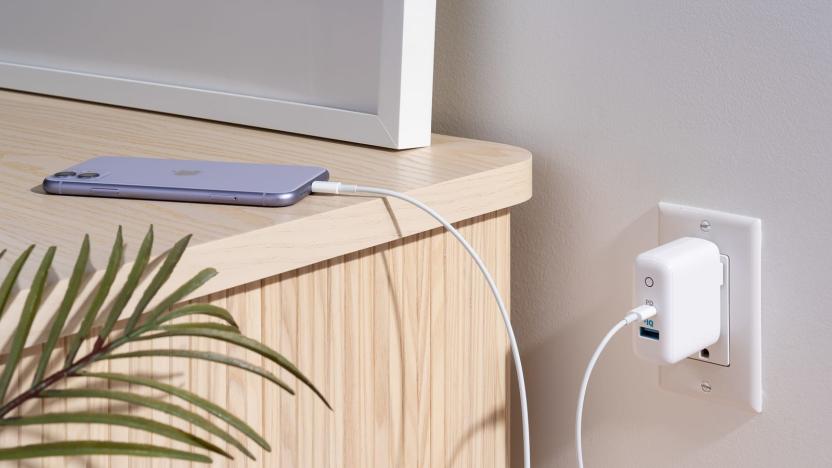
The best USB phone charger
By Nick Guy This post was done in partnership with Wirecutter. When readers choose to buy Wirecutter's independently chosen editorial picks, Wirecutter and Engadget may earn affiliate commission. Read the full guide to USB phone charger. The best USB phone chargers can power your phone as rapidly as it and your cable will allow. After testing 16 power adapters this year, we've determined that the Anker PowerPort PD 2 is the best option for charging any phone. No matter which cable or port you use to charge, you'll get the fastest rate possible. And the PowerPort PD 2 can support maximum speeds on both ports at the same time. If you have an iPhone 8 or later, you'll need to buy a USB-C–to–Lightning cable to take advantage of the faster charging that the smaller, rounded USB-C ports offer. (The new iPhone 11 Pro and 11 Pro Max come with a USB-C–to–Lightning cable, while every other iPhone continues to ship with a USB-A–to–Lightning cable.) If you have an Android phone and a USB-C cable already, you won't need to buy anything extra to fast-charge with our USB-C picks.

The best Christmas lights
By Doug Mahoney and Thom Dunn This post was done in partnership with Wirecutter. When readers choose to buy Wirecutter's independently chosen editorial picks, Wirecutter and Engadget may earn affiliate commission. Read the full guide to christmas lights. Christmas lights bring a unique glimmering warmth to your holiday season—or your backyard, your favorite dive bar, or really anywhere else, for that matter. After more than 100 hours of researching, interviewing experts, and testing more than 25 different string light sets since 2014, we believe GE's Energy Smart Colorite LED Miniature Lights (available in strands of 100 bulbs in multicolor or warm white) offer a combination of light quality, color accuracy, and wide availability that has been unmatched among competitors since we began recommending GE's Colorites five years ago. Like all LED models, the GE Colorite lights are safer, more durable, and longer lasting than traditional incandescent lights, and they barely draw any electricity at all. Among the LEDs we looked at, we found that the GE Colorites' hues of warm white and especially multicolor closely matched those of traditional incandescents. They also have a tidy wire that doesn't curl or twist, simplifying the task of draping them through a tree or storing them in the off-season. The bulbs should last for at least 10 holiday seasons, and you can replace individual bulbs if they go out (or you can just leave those; the rest of the strand will stay lit). Although you can use the Colorites outdoors, we think they're best for indoor use, since the bulbs aren't completely watertight. Overall, these lights offer better benefits and have fewer drawbacks than any other indoor lights we tested. The GE lights have sold out quickly the past few years, so if that happens again, we recommend the Christmas Designers T5 Smooth LED Christmas Lights (available in warm white, multicolor, or solid color). In our tests the multicolor lights looked as good as the GEs, while the warm white lights had a cooler tone that was a little further from the coziness of an incandescent. For outdoor use, we recommend the Christmas Lights Etc Kringle Traditions Wide-Angle 5mm Outdoor LED Christmas Tree Lights, available in white, multicolor, or single color in a variety of lengths and bulb spacings. These lights offer all of the benefits of LEDs as well as a design that makes each bulb impervious to moisture for weeks in the snowy, sleety, rainy outdoors—we confirmed that by leaving a lit set submerged in a water-filled bucket all day. We liked the warmth of the color, the bright light output, and the manageable wires. Due to the unusual design of the wide-angle bulb, the brightness of each changes dramatically depending on where you're standing, giving the lights texture and depth when they're draped over a tree or twisting around a porch post. Because they're likely to be exposed to harsh exterior conditions, these lights have a shorter lifespan than indoor LEDs, but you can still expect six or seven seasons out of them. The only major drawback is that they're a bit too bright for indoor use. Pro lighting designers and other experts have consistently named this particular type of bulb as the ideal choice for outdoor holiday-lighting displays. If the Christmas Lights Etc lights aren't available, Christmas Designers makes a similar string light that's just as good but a little less bright. Last, if you're not ready to give up the unique warm twinkle of incandescents for an indoor tree, Christmas Lights Etc's Clear Christmas Tree Mini Lights are our favorites. These mini-light sets emit the warmest overall light, and like our other picks, they have an easy-handling wire. They also cost less than an LED strand, but they're not as durable, they're less efficient, and they won't last as long—you can expect 2,000 to 3,000 hours of use, versus an average life of 20,000 hours for our pick. That's just the bulb life, too, not even taking into account how fragile and easily breakable an incandescent filament is. If you can't decide between white or multicolor lights, the GE Color Choice Multi or Warm White Multi Function LEDs offer the best of both worlds. A small control box near the plug lets you choose white, multicolor, or both, in a variety of flashing and steady lighting options. The colors aren't as good as what you get with a dedicated white or multicolor string light set, though; the white in particular is more neutral and bland than warm, and the green is somewhat lime-like. But we think that's a fair trade-off for their flexible usage. One thing to keep in mind: Although the lights themselves are generally safe for outdoor use, the control box can malfunction in the wrong conditions, so try to plug it in somewhere that's safe and dry.

Wirecutter's best deals - Jabra Elite 85h Bluetooth headphones drop to $200
This post was done in partnership with Wirecutter. When readers choose to buy Wirecutter's independently chosen editorial picks, it may earn affiliate commissions that support its work. Read Wirecutter's continuously updated list of deals here.
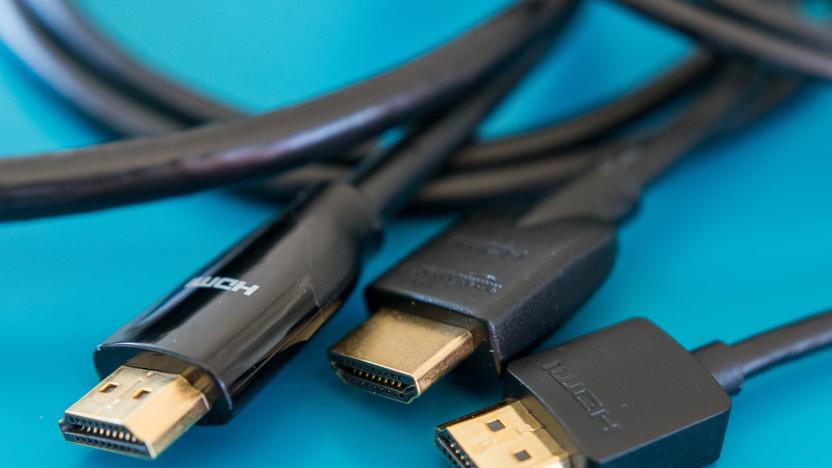
Cheap, great HDMI cables
By Geoffrey Morrison This post was done in partnership with Wirecutter. When readers choose to buy Wirecutter's independently chosen editorial picks, Wirecutter and Engadget may earn affiliate commission. Read the full guide to cheap, great HDMI cables. If I needed an HDMI cable, I'd get the 3-foot AmazonBasics High-Speed HDMI Cable. This cable (also available in lengths up to 25 feet) will handle the 18 Gbps (gigabits per second) of data required of Ultra HD 4K video with HDR. It also has a lifetime warranty and free shipping if you're a Prime member. You might be able to find even cheaper HDMI cables, but none have its warranty and easy return policy. The AmazonBasics High-Speed HDMI Cable is a no-frills HDMI cable, but with HDMI, frills aren't necessary. The cable is sturdily built and works with any video signal of today (and probably ones into the near future). Both the 3- and 15-foot lengths passed all our tests, including HDR tests. It has a 4.6/5 rating on Amazon from over 15,000 reviews. They sell for about $2 per foot or less, if you have Amazon Prime (free shipping). If you don't have Prime, Amazon lowered the price of their free shipping to orders above $35. Or, if you just don't want to go with Amazon, Monoprice cables work the same and are very close in price. The Monoprice Certified Premium High Speed HDMI Cables work just as well as the AmazonBasics cables but are slightly more expensive when you include shipping. Either way, the prices are very close. Monoprice also has a far greater variety of lengths and thicknesses across a huge number of different series. So if you need a short, skinny cable or very long lengths to make your installation work, Monoprice likely has an inexpensive option that will do the job. For reasons we'll explain, there is no need to spend more on a basic HDMI cable.
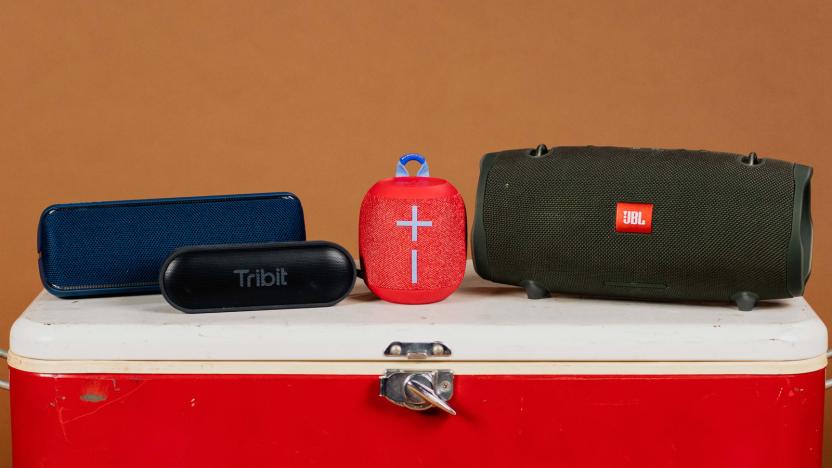
The best portable Bluetooth speaker
By Brent Butterworth This post was done in partnership with Wirecutter. When readers choose to buy Wirecutter's independently chosen editorial picks, Wirecutter and Engadget may earn affiliate commission. Read the full guide to portable bluetooth speakers. Portable Bluetooth speakers come in a variety of shapes, sizes, and prices, so it's impossible to say that any one model is perfect for everyone. But we think the UE Wonderboom 2 has the best chance of delighting your ears without walloping your finances. This speaker has a full, clear sound and a compact design. It's also waterproof and dustproof, and built to survive even the most adventurous vacations. The UE Wonderboom 2 is as euphonious as Ariana Grande but as tough as Lara Croft. In our blind tests, our panelists picked this Bluetooth speaker as the best-sounding model under $100, with its especially clear vocal reproduction and a decent amount of bass for its size. It has an IP67 rating and is one of the most rugged Bluetooth speakers we've tested, able to survive a 5-foot drop and a dunking in 1 meter of water—but because it floats, it'll probably never dive that deep. The Wonderboom 2's only downside is its battery life, which, at eight hours, is adequate but not impressive. We like the Wonderboom's cute, compact design, even if the almost-spherical shape makes this model a little tougher to pack away in a suitcase pocket or laptop bag. If you want a portable Bluetooth speaker that approaches the sound of a good small stereo system yet is rugged enough to take almost anywhere, the JBL Xtreme 2 is a terrific choice. Three of our four listeners thought the Xtreme 2 was the best-sounding speaker we tested, praising it for its ample bass, high maximum volume, and overall clear, clean sound. It's IPX7-rated, which means it can survive submersion in 1 meter of water, and it includes a handy, strong carrying strap. The Xtreme 2 also delivered 19 hours of battery life. But it's much larger and pricier than the UE Wonderboom 2. If you need something that sounds a little louder and fuller than the UE Wonderboom 2, but that's more portable and affordable than the JBL Xtreme 2, the Sony SRS-XB32 finds a nice middle ground. It's about twice the Wonderboom 2's size, plays a little bit louder, and puts out a lot more bass. It's also rugged, with an IP67 waterproof/dustproof rating. In our battery test, it automatically reduced its volume after about six hours of fairly loud use, but it played for about five more hours after that. It also has adjustable multicolor lights and flashing strobes, which don't appeal to us—but somebody must like these things or manufacturers wouldn't keep including them. If you want to spend the bare minimum on an all-around good portable Bluetooth speaker, the Tribit XSound Go is a great choice. Its sound is obviously clearer and louder than that of almost all other budget Bluetooth speakers. The XSound Go is also small enough to slip into a laptop bag or an already stuffed suitcase, and it will run 10½ hours on a charge. Plus, it's IPX7-rated, which means it's sufficiently waterproof to survive a half-hour dunking in 1 meter of water, and it has a speakerphone function. The EcoXGear EcoBoulder+ is a completely different kind of portable Bluetooth speaker than our other picks—it pumps out maximum volume for pool parties, picnics, and tailgating events. Although it can blast, it can also soothe—not only with its full, natural sound, but also with a built-in bottle opener and cupholders. Weighing 29 pounds and sized like a roll-aboard suitcase, the EcoBoulder+ is not something you'll take on business trips, but its retractable handle and wheels do make it easy to lug around. It also has a built-in AM/FM radio and a long battery life—24 hours, in our test.
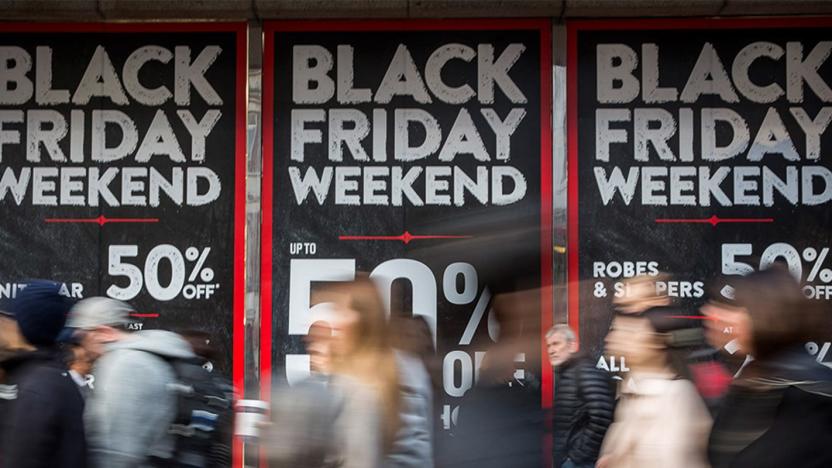
Five things to avoid on Black Friday
By Elissa Sanci To make the most of Black Friday, follow the Wirecutter Deals page throughout the event, where we'll be updating our list of researched deals that are actually worth your time. See Wirecutter's latest deals here. Black Friday is a highly anticipated day for shoppers who can't resist a good deal. For others, it's an overwhelming 24-hour marathon where the pressure to buy anything (everything?) feels unbearable. For me, watching a timer tick down the minutes until the discounts expire makes me panic, and most years I wind up buying nothing. But there's no longer a reason to panic on Black Friday. Through our obsessive price tracking and deal finding for the Wirecutter Deals page and daily deals newsletter, my coworkers and I know that some bargains get posted as early as November 1, turning Black Friday from one high-stress day into an entire month rich with discounts. That ticking clock creates a sense of urgency, and sometimes, you do have to be quick to buy a deal before it expires. More often than not, though, you can take an extra few minutes to verify details and really think about your needs. To help reduce your stress on Black Friday, here are five things the Wirecutter Deals team thinks you should avoid this year while you hunt for the best deals on the items you actually need.
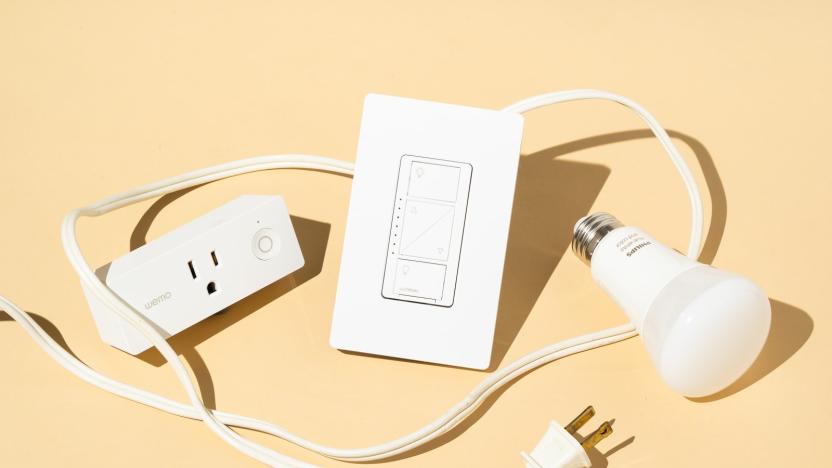
When to use a smart bulb, switch or plug
By Rachel Cericola This post was done in partnership with Wirecutter. When readers choose to buy Wirecutter's independently chosen editorial picks, Wirecutter and Engadget may earn affiliate commission. Read the full blog seeing the light: when to use a smart bulb, switch, or plug. I'm not sure if it's because I've captured a lot of critters on home security cameras or seen one too many horror movies, but entering a dark house terrifies me. Although my husband would be perfectly happy to solve this problem by leaving the lights on all day and night, it's completely unnecessary: Smart lighting exists for precisely this purpose. Setting up your home with smart lights can solve a lot of problems. However, because there are several types of devices you can pick from—bulbs, light switches, and add-on plugs—it can be hard to know where to start. Why and when do you pick one of those devices over another? All smart lighting devices allow you to control them from your smartphone, and you can set them up to work like old-fashioned lighting timers, but they can do much more. You can control whole groups of lights at once, set them to go on and off based on local sunset times, and configure them to respond to other smart devices, such as motion sensors or security cameras. But each type of device has a superpower (and also a weakness, just like Superman). Let's look at what devices work best for three different scenarios.

The best 4K monitors
By Justin Krajeski This post was done in partnership with Wirecutter. When readers choose to buy Wirecutter's independently chosen editorial picks, Wirecutter and Engadget may earn affiliate commission. Read the full guide to 4k monitors. Anyone buying a monitor in 2019 should consider a 4K monitor first: They don't cost much more than non-4K models, and they look a hell of a lot better. After spending 50 hours researching nearly 60 monitors and testing six finalists, we found that the HP Z27 is still the best 4K monitor for most people. It's extremely color accurate, it can charge your laptop from its USB-C port, and it has a highly ergonomic stand. The HP Z27 is the best 4K monitor especially if you have a USB-C laptop or plan to get one, which is more and more likely in 2019. The screen is one of the most color-accurate we found, and its stand is more adjustable than most, with tilt, pivot, swivel, and height adjustments that make it easy to set at the correct height and position for your needs, especially if multiple people share the same monitor. The USB-C port means that if you have a compatible laptop, such as a recent MacBook or Windows ultrabook, you can use the single USB-C connection to connect to the screen, charge your laptop at up to 65 W, and power the monitor's two USB 3.0 ports for use with mice, keyboards, storage, or other devices, all at the same time; this dramatically reduces the number of cables around your desk. The monitor also has thin bezels, so the screen appears larger and the monitor takes up less space than some other models. (Thin bezels also just look better.) HP covers the Z27 with a three-year warranty and a dead-pixel policy that should be a comfort to anyone buying a 4K monitor. The Lenovo ThinkVision P27u is a good runner-up option if the HP Z27 is out of stock or too expensive. Its colors are a bit more accurate than the Z27's—albeit not in ways that are detectable to the naked eye—but its contrast ratio is a bit worse, which is noticeable. Its adjustable stand lifts, tilts, and pivots, but it doesn't swivel like the Z27's does. Nor is this monitor as aesthetically pleasing: Its buttons are on the front, its base is rounded instead of squared, and a thick neck connects the monitor to the base, in contrast to the HP design's thinner, dual stems. Like the HP, the Lenovo can connect and charge a laptop via USB-C, and it includes a useful DisplayPort connection as well as HDMI and USB 3.0 ports. Like the Z27, the ThinkVision P27u has thin bezels around the sides and the top, which makes its screen nice to look at. It comes with a three-year warranty, too. Although the Dell UltraSharp U2718Q offers an amount of adjustability similar to that of the HP Z27 to accommodate different postures at work, in our testing it wasn't as color-accurate—in particular, its grayscales were inaccurate, which could lend a colored tint to monochrome images. It also lacks USB-C connectivity. We think USB-C support on a monitor is worth paying more for in 2019, but if you don't think the same—for example, if you plan to use your monitor only with desktop computers that have discrete graphics cards, which don't usually support USB-C—you can typically save about $100 by buying the U2718Q instead of the HP Z27 or Lenovo P27u. The U2718Q comes with a useful three-year warranty, as well as a Premium Panel Guarantee that covers defective pixels; if there's even one bright pixel, Dell will replace the whole monitor. If you buy the Dell U2718Q, make sure it's running firmware version M2B102 or newer, and update it following these steps if necessary; older firmware versions produced visibly inaccurate greens and yellows that this firmware version fixes. If you want a physically larger screen, a monitor you can use with two computers at the same time, or one that can charge a 15-inch MacBook Pro at full speed over its USB-C port, we recommend the 32-inch Dell UltraSharp U3219Q. Its color accuracy is comparable to that of our top picks, and it has plenty of ports, including a USB-C port that can receive the video signal, provide a data connection between your computer and the monitor's USB 3.0 ports, and charge your laptop at up to 90 W. The U3219Q also has rare features such as a built-in KVM (keyboard, video, mouse) feature and picture-by-picture mode, which allow you to use a single keyboard and mouse to control two computers and even view both on screen simultaneously. The U3219Q costs nearly $200 more than our pick at the moment and takes up significantly more space, but if you want to avoid scaling or you're running a two-computer setup, it's an excellent choice. If you don't have room on your desk for a 27-inch monitor but you still want a good 4K screen, get Dell's P2415Q. The P2415Q's screen is 3 inches smaller diagonally than the HP Z27's, with extremely accurate colors and similar features. It has HDMI and DisplayPort connections plus four USB 3.0 ports, and its stand is just as adjustable as that of the Z27. The relatively thick screen bezel makes it look chunky next to newer 4K monitors, but it's still the best 24-inch 4K monitor we've tested. It comes with the same dead-pixel policy and warranty as the Dell U2718Q. It doesn't have USB-C support, but we can't find a 24-inch 4K monitor that does.
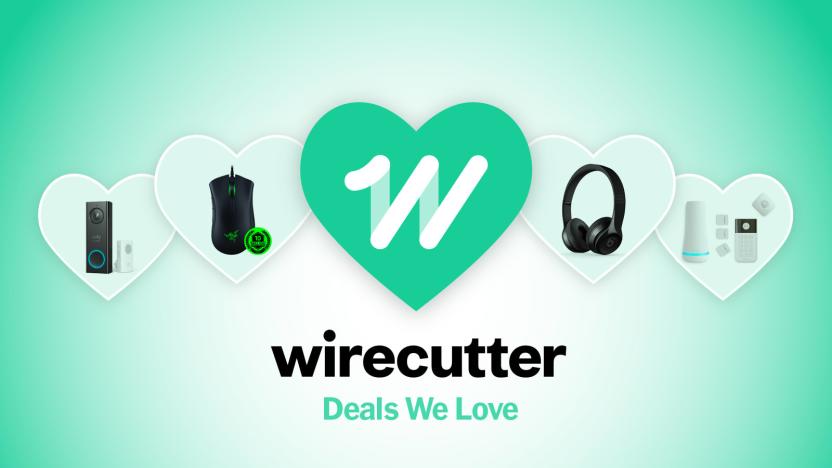
Wirecutter's best deals: $40 off Beats Solo3 Bluetooth headphones
This post was done in partnership with Wirecutter. When readers choose to buy Wirecutter's independently chosen editorial picks, it may earn affiliate commissions that support its work. Read Wirecutter's continuously updated list of deals here.

Shopping tips to get the most out of Black Friday and Cyber Monday
By Nathan Burrow Black Friday 2019 is coming, and we're getting ready to bring you all the best deals on Wirecutter picks and recommendations from our expert staff. Bookmark our Deals page, follow @WirecutterDeals on Twitter, and sign up for our daily deals newsletter to see the best deals from around the Web on Black Friday—and every day. Whether you're a technophile awaiting the first real discount on the Bose Noise Cancelling Headphones 700 or a homebody feathering your nest, Black Friday and Cyber Monday offer opportunities to get a great price on that special something. The Wirecutter Deals team keeps tabs on all the discounts, from sitewide promotions to flash sales. Last year, we sifted through nearly 80,000 deals over the duration of the November deal holidays. We find and post the best sale prices on great gear all year round, so when Black Friday arrives, we have the experience and the know-how to find you the best deals on the best stuff and to omit the duds. Following are some shopping tips for Black Friday and Cyber Monday that we apply both in our day-to-day scanning and in our own Black Friday shopping—we hope they'll help you get the most for your money.
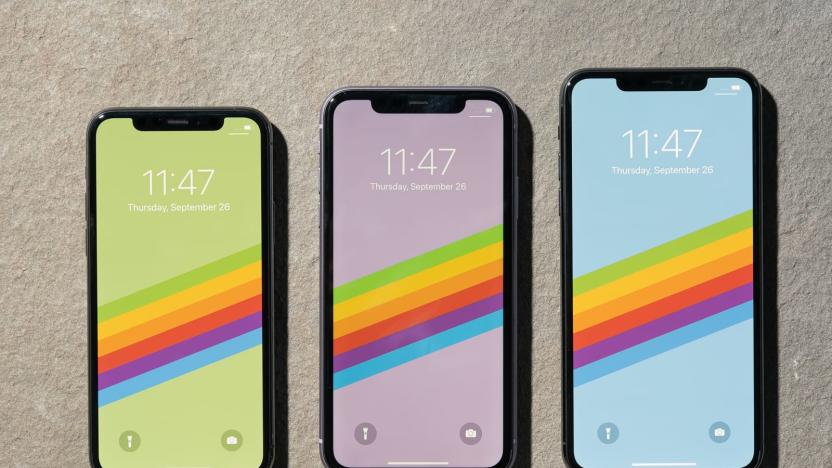
How to find Apple deals this Black Friday
By Elissa Sanci Black Friday 2019 is coming, and we're getting ready to bring you all the best deals on Wirecutter picks and recommendations from our expert staff. Bookmark our Deals page, follow @WirecutterDeals on Twitter, and sign up for our daily deals newsletter to see the best deals from around the Web on Black Friday—and every day. I am an Apple superfan. I own an iPhone, a MacBook, and a graveyard of now-discontinued iPods that I hide away in a desk drawer. I think about splurging on an iPad often, and though I have no actual use for one, I've been dropping hints to anyone who will listen that I'd like an Apple Watch for Christmas. As Black Friday approaches, it's only logical to assume that the steep discounts will extend to Apple products, giving you a chance to stock up on the newest gadgets. I know I was looking forward to it. Unfortunately, though, this isn't usually the case: Apple gear rarely experiences deep price drops, even during big deals holidays like Black Friday and Cyber Week (or the month leading up to them). According to senior staff writer Nick Guy, who's spent years covering Apple products for Wirecutter, finding great deals on Apple devices can be tricky because discounts are generally restricted to older products. Although you won't find many deals on newer stuff, there will definitely be opportunities to score good deals on some Apple products: Our experts predict nice price drops on iPads and Apple Watches this Black Friday, with older models seeing particularly good deals. And though it's unlikely we'll see great deals on phones or laptops, there's a possibility we'll see a rare MacBook price drop or a gift card offer for iPhones that will be worth your time. To help you navigate Black Friday's deals landscape and come out on top, we've put together a full guide of everything you need to know about scoring the best prices on Apple stuff this holiday season.
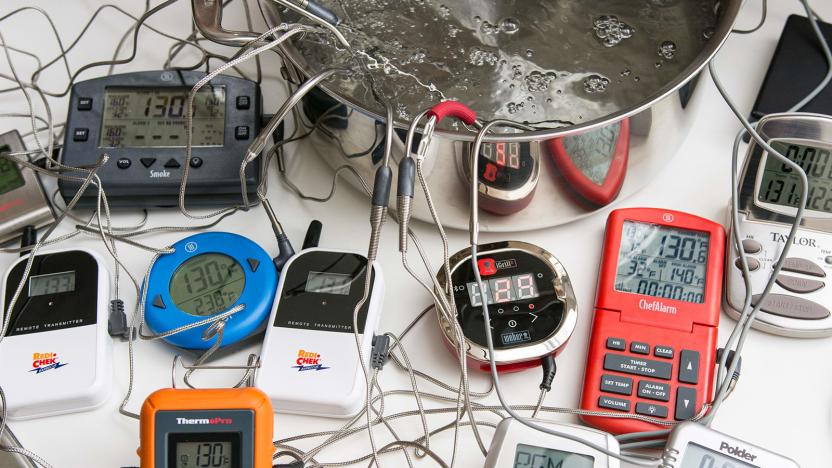
The best probe thermometer
By Michael Sullivan This post was done in partnership with Wirecutter. When readers choose to buy Wirecutter's independently chosen editorial picks, Wirecutter and Engadget may earn affiliate commission. Read the full guide to probe thermometer. After spending 20 hours testing probe thermometers and speaking with experts—including cookbook authors, chefs, butchers, and a New York City Department of Health employee—we think most cooks just need a regular meat thermometer. But if you're set on getting a probe thermometer to measure the temperature of food while it cooks, we recommend the ThermoWorks Dot. In our tests, the Dot was the fastest and most accurate at reading temperatures. Its simple design and straightforward controls made it easier to use than the competition. The ThermoWorks Dot is accurate, affordable, and easy to use. It has a very wide temperature range, as it's capable of measuring from -58 °F to 572 °F. It also has one of the longest probe cables of any of the thermometers we considered. The digital display on the ThermoWorks Dot is easily readable, and we thought the controls were straightforward and intuitive. We also like its backlit screen, which is handy for outdoor grilling at night. If you're looking for a few more helpful features, the ThermoWorks ChefAlarm includes a timer and volume adjustment as well as a backlit screen. In our tests, though the ChefAlarm was a couple of seconds slower than the Dot at reading temperatures, it was just as accurate. We especially liked the convenience of the timer on this model. The digital unit is also hinged, so you can lay it flat or adjust it to a specific angle. Unlike our other picks, the ChefAlarm thermometer comes with a case to hold the probe and the digital unit. Unlike our other picks, the ThermoWorks Smoke can operate via a wireless receiver and has two channels to accommodate multiple probes: one probe to take the internal temperature of the meat, and an air probe for measuring the ambient temperature of the oven, grill, or smoker. In our tests, the Smoke maintained its wireless connection for an unobstructed distance of 350 feet. It has a backlit screen and volume control, but no timer, and because it's $60 more than our main pick, we recommend it only for grill and smoker enthusiasts.

The best USB car charger
By Nick Guy This post was done in partnership with Wirecutter. When readers choose to buy Wirecutter's independently chosen editorial picks, Wirecutter and Engadget may earn affiliate commission. Read the full guide to USB car chargers. For a few bucks, a good USB car charger can charge your phone and other devices faster than the port that came in your car. After testing more than 60 models, we think the best car charger is the dual-port Nekteck PD 45W Type-C Car Charger. You can fast-charge phones, tablets, and laptops from its USB-C port, and simultaneously charge a second phone on its USB-A port. No other charger offers as much power for a better price. Compared with the familiar USB-A port, the smaller USB-C port can charge most modern phones faster (if you're using the right cable) and can even charge tablets and laptops. And the Nekteck PD 45W Type-C Car Charger provides the best of both worlds. When you're using a USB-C–to–Lightning cable, the charger's USB-C port can charge an iPhone about three times faster (at 18 watts) than the USB-A wall charger that comes in the box from Apple; your phone can charge from empty to roughly 50 percent in just half an hour while you're sitting in traffic, say, or running errands around town. This Nekteck charger's 45-watt output and included USB-C–to–C cable also support the maximum charge rate on Android phones (such as the Samsung Galaxy S10), the 2018 iPad Pro, and even many laptops. And you can use the 12-watt USB-A port at the same time to charge a second phone or other device with any USB cable you already have. Port one: 45 W USB-C Port two: 12 W USB-A With two USB-C ports, the Scosche PowerVolt Power Delivery Dual 18W USB-C Car Charger (CPDC8C8) is what you should get if you want to fast-charge two modern devices at the same time. Each of the PowerVolt's USB-C ports supports full 18-watt charging, so you can charge two modern phones at top speed; that means an iPhone's battery will go from 0 to around 50 percent charged in half an hour, compared with about 35 percent on a standard 12-watt USB-A charger. A dual–USB-C setup is rare—this is the only such model we've found from a company we trust. You can still use this charger with older phones, such as an iPhone 7 or earlier—they just won't charge any faster than on a USB-A charger. Port one: 18 W USB-C Port two: 18 W USB-C We think getting a faster USB-C charger is worth spending a little more, but if you simply want a good, inexpensive power source in the car, go with ZMI's PowerCruise C2 36-Watt Dual USB Car Charger with QC 3.0. All two-port, 24-watt chargers from reputable companies in this price range work just as well as any other, but unlike similar models we tested, this ZMI charger stands out because it supports Quick Charge 3.0 on both ports, offering slightly faster speeds to devices that support that standard. It's also made of metal instead of the cheaper-feeling plastic of almost every other charger. Port one: Quick Charge 3.0 USB-A Port two: Quick Charge 3.0 USB-A The RAVPower Quick Charge 3.0 54W 4-Port Car Adapter (RP-VC003) is especially useful when you're traveling with a car full of passengers, as it can charge up to four devices simultaneously without taking up much more space than competing two-port models. Each of its ports can put out 12 watts, and one supports Quick Charge 3.0, so you're not sacrificing charging speed for more devices. Port one: Quick Charge 3.0 USB-A Port two: 12 W USB-A Port three: 12 W USB-A Port four: 12 W USB-A

Wirecutter's best deals: Save $200 on a 13-inch MacBook Pro (2019)
This post was done in partnership with Wirecutter. When readers choose to buy Wirecutter's independently chosen editorial picks, it may earn affiliate commissions that support its work. Read Wirecutter's continuously updated list of deals here.
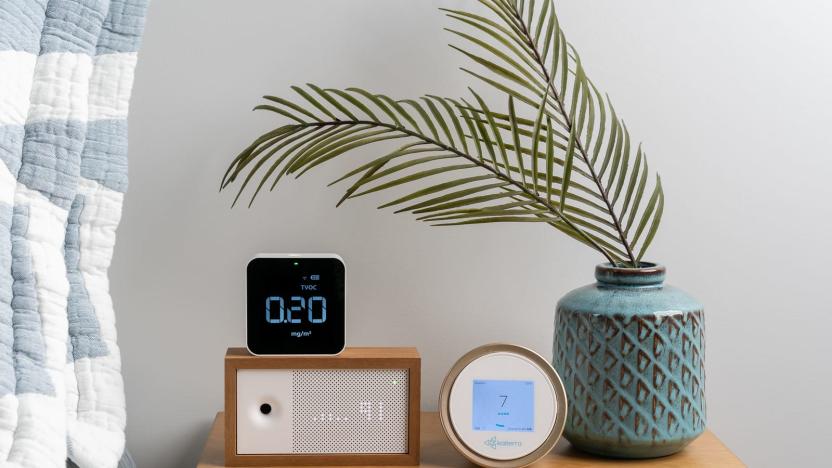
The best home air quality monitor
By Tim Heffernan This post was done in partnership with Wirecutter. When readers choose to buy Wirecutter's independently chosen editorial picks, Wirecutter and Engadget may earn affiliate commission. Read the full guide to home air quality monitors. A good air quality monitor can measure air pollution in your home—though it won't actually do anything to fix it. After living with seven monitors, and using our experience in testing air purifiers to determine how accurate (and necessary) these devices are, we recommend the Kaiterra Laser Egg+ Chemical. With its easy-to-use app, reliable and intuitive information, and versatile smart-home integrations, this is the device we'd turn to first to find out whether an air purifier or HVAC filter was working as expected. With its clean design, simple and efficient physical controls and app, and smart functionality, the Kaiterra Laser Egg+ Chemical provides the most versatility and capability of the monitors we tested. The app itself was the best we tested: stable and logically laid out, with air quality readings that were clearly displayed. And the device is easy to use and live with. A single button cycles through the Kaiterra's readings, and at night, you can shut off the display—while the device continues to monitor the air—so it won't disturb your sleep. And because the Kaiterra has Apple HomeKit and IFTTT support built in—with Google Home and Alexa expected by the end of 2019—you can program the device to automatically turn on a smart air purifier or central AC in the event of poor air quality. Like many of the best monitors we tested, the Kaiterra met a primary requirement to measure several types of pollution that have a meaningful impact on air quality. If you don't need smart functionality or an app, and you just want to be able to glance at a monitor and know what's going on in your air, we recommend the Temtop M10. Like the Kaiterra, it measures particulate and gaseous pollutants, and the two gave virtually identical readings in our testing. Its bright display can be read from across a room, and its tiny size and simple form make it easy to keep on a desk or bedside table. Lacking Wi-Fi connectivity, it has no associated app, let alone smart functionality. But that's not an inherent weakness. It's just a different approach to air quality monitoring that we think will satisfy many people's needs. And the M10 usually costs less too.
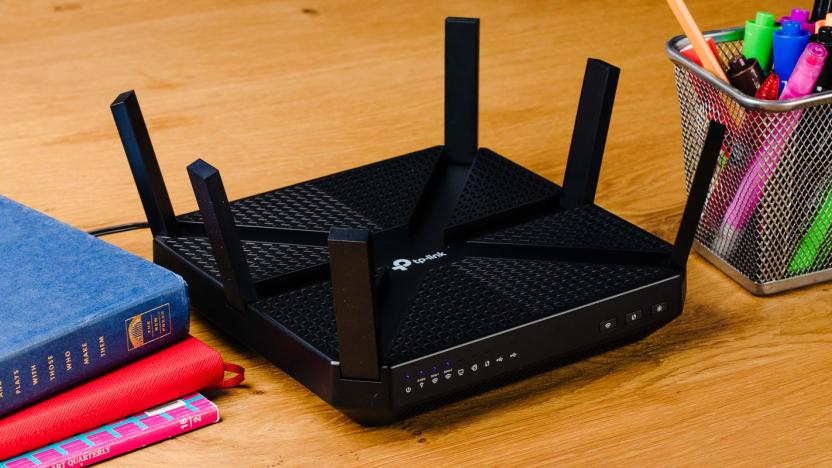
The best WiFi router
By Joel Santo Domingo This post was done in partnership with Wirecutter. When readers choose to buy Wirecutter's independently chosen editorial picks, Wirecutter and Engadget may earn affiliate commission. Read the full guide to Wi-Fi routers.
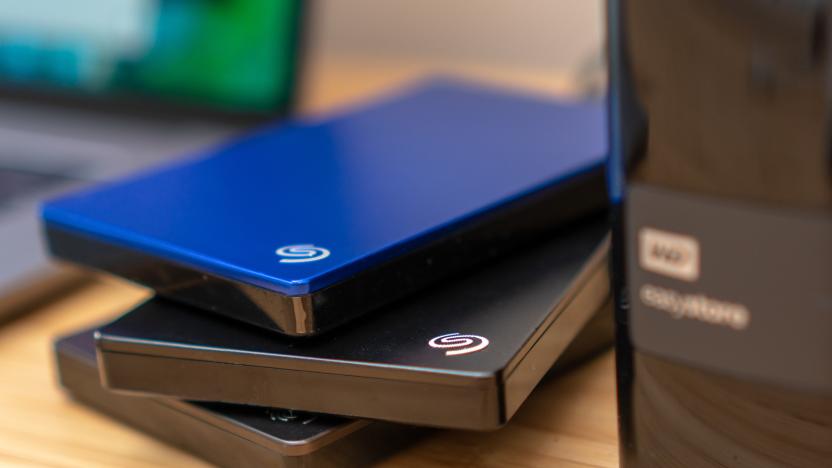
The best external hard drives
By Justin Krajeski This post was done in partnership with Wirecutter. When readers choose to buy Wirecutter's independently chosen editorial picks, Wirecutter and Engadget may earn affiliate commission. Read the full guide to external hard drives. We've spent hundreds of hours researching and testing external drives to find the best options for any use and budget. If you want a dependable external drive that has plenty of storage space for documents and photos and is easy to take on the go, get the 2 TB Seagate Backup Plus Slim. But we also have recommendations if you want more storage space, if you want something more reliable or even faster, or if you need to regularly move large amounts of data from one computer to another with an external drive.